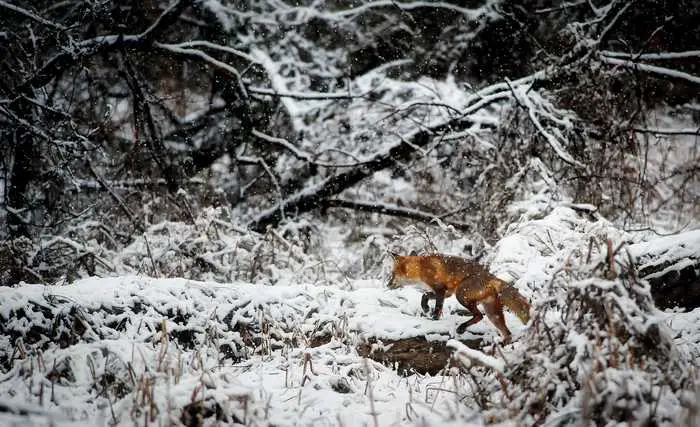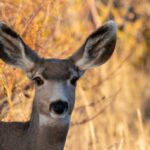It’s that time of year again. The leaves are changing color, the air is crisp and cool, and you’re getting the itch to go hunting. But what does late season hunting entail?
Late season hunting can be defined as any hunt that takes place after the majority of the animals have been harvested. This usually occurs around mid-November or early December. Some hunters may choose to wait until even later in the winter to hunt, but typically, by this point, most game has either been killed or has migrated elsewhere.
So why bother hunting during late season? For some diehard hunters, it’s simply a matter of tradition – they’ve always hunted at this time of year and see no reason to change now. Others enjoy the challenge that comes with tracking down elusive prey that has evaded capture all season long. And still others appreciate the solitude that can be found in a forest when all the other hunters have gone home for the winter.
Whatever your reasons for wanting to hunt during late season, there are a few things you should keep in mind before heading out into the woods. First and foremost among these is safety: make sure you let someone know where you’re going and when you expect to return, just in case something happens while you’re out on your own. Second, remember that many animals will have already been killed by this point in the season – so don’t get your hopes up too high if you’re targeting a particular species.
How do you hunt doe late season?
Whether you’re a seasoned hunter or new to the sport, targeting doe during late season can be a great way to fill your freezer. Here are a few tips to help you successfully hunt doe during the late season.
First, consider hunting areas that offer food and cover. Doe will often bed down in thick cover during the day, so look for areas with dense vegetation. Pay attention to food sources as well – does will often frequent fields and crop edges in search of food.
Next, think about how you can use the weather to your advantage. Late season typically brings colder temperatures, which can cause deer to move more during daylight hours in search of food. Take advantage of this by setting up near likely feeding areas. Additionally, windy conditions can help mask your scent from deer, so consider hunting on days when there is a strong breeze blowing.
Finally, remember that patience is key when hunting during the late season. Since deer are moving less and spending more time bedded down, it may take longer for them to show themselves. Stay patient and wait for the perfect shot opportunity before taking it.
Should you shoot does early or late season?
It’s a common question among deer hunters: should you shoot does early or late season? There is no definitive answer, and it ultimately comes down to personal preference. However, there are some things to keep in mind that may help you make your decision.
Early season doe hunting can be a great way to fill your freezer. The deer are typically more active during this time of year and they haven’t been hunted as much, so they’re less shy around humans. Plus, the meat is usually more tender since the deer haven’t been working hard to stay alive through the winter months.
Late season doe hunting has its own benefits. For one, the deer are often easier to find during this time of year because they tend to congregate in larger groups. Additionally, the meat from a late-season doe can be just as good as early-season meat if the deer is healthy and has access to food throughout the winter months.
Ultimately, it’s up to you when you want to hunt does. If you’re looking for an easy harvest, then early season may be your best bet.
How do you buck a late season bag?
If you’re looking to buck a late season bag, there are a few things you can do to increase your chances of success. First, target food sources. Deer will gravitate towards shrubbery during winter, so set up on well-used trails near these areas.
Second, sit as long as possible. The cold weather may be daunting, but the longer you wait, the more likely you are to see deer.
Finally, don’t be afraid to use calls or scents to attract deer; they’ll often be curious about new smells and sounds in their environment. By following these tips, you’ll improve your chances of filling your tag during the late season.
How do you hunt late season?
There are a few things to keep in mind when hunting during the late season. First and foremost, dominant bucks will be focused on replenishing their body mass and fat reserves that were depleted during the rut. This means they’ll be hitting food sources hard, so if you can find a place where they’re feeding, you’ll have a good chance of spotting one. Additionally, mature bucks may even feed during daylight hours in some cases, so don’t rule out the possibility of seeing one during the day.
When hunting during the late season, it’s also important to remember that the weather can play a big factor in how successful you’ll be. If it’s cold and snowy, for instance, deer will likely bed down for long periods of time to conserve energy. In this case, your best bet is to look for areas where they’re likely to bed down and wait for them to move again. Conversely, if it’s relatively mild out, deer will be more active and thus easier to spot. Pay attention to both the weather conditions and local deer activity levels when planning your hunt.
By following these tips, you should have success tracking down deer during the late season.
How do you find deer in late season?
If you’re looking for deer in late season, the best bet is to find areas where there is food available. Both does and bucks are run down from the primary rut at this time of year, and they need to eat to stay alive. The colder it is (and the more snow there is), the harder deer will move around in search of food, so they will be more visible during daylight hours. Look for areas where there is corn, soybeans, or alfalfa available – these are all great sources of food for deer in late season.
How do you call in a late season buck?
If you’re looking to call in a late season buck, there are a few things you can do. Grunts, snorts, bleats and wheezes are all part of a deer’s vocabulary, so try laying down a few grunts followed by a snort or two. This can get the attention of a big late season buck who may think another deer is cutting in on his territory.
How do you deer hunt late season in the morning?
If you’re planning on deer hunting late in the season, there are a few things you’ll need to keep in mind. First, remember that the deer will be more active in the morning hours during this time of year. So, you’ll want to be sure to get out early and set up your stand or blind before sunrise.
Another thing to keep in mind is that the deer will likely be moving around more during the day as they search for food. This means you’ll need to be extra careful when choosing your hunting spot. You’ll want to find a place where there is plenty of cover and where you can stay hidden from the deer’s view.
Finally, remember thatlate-season deer hunting can be challenging due to the colder weather. Be sure to dress warmly and pack some extra snacks and drinks just in case you end up spending more time out in the field than anticipated. By following these tips, you’ll increase your chances of success when hunting late in the season.
How do you target late season bucks?
There are a few things to keep in mind when targeting late season bucks. First, they will be in search of high carbohydrate and high fat food sources. This means that standing soybeans and corn will be on their radar. In areas where the winters are brutal, corn is usually king. That being said, deer will usually crave soybeans and corn during cold temperatures – but corn usually wins out in the end.
When targeting late season bucks, it’s also important to remember that they will likely be holed up in thick cover. This means that getting a clear shot can be difficult. Patience and perseverance are key when hunting late season deer.

Where can I find late season daylight bucks?
As a deer hunting writer and editor, I’ve probably written the word “pressure” more than any other. But in this case, we’re talking about the lack of pressure—namely, from other hunters. Where can you find these unpressured pockets of security cover? Read on for five possibilities.
1. Near major (and minor) food sources. Bucks will often spend the late season close to where they know they can find food. This might be a big acorn-producing oak tree or a cornfield that hasn’t been harvested yet. Look for areas where there is still plenty of food available and you’ll likely find some bucks hanging out nearby.
2. Close to open water sources. Dehydration is a real concern for deer during the late season, when temperatures are typically colder and food is less abundant. If you can find an area where there is access to fresh water, chances are good that some bucks will be hanging out there too.
3. High up on the ridges. Another good place to look for late season bucks is high up on ridges, where they can take advantage of commanding views and spot potential predators from afar.
Is morning or evening better for late season deer?
There are a few things to consider when deciding whether morning or evening is better for late season deer hunting. First, think about the temperature. Late season generally means colder weather, so you’ll want to dress appropriately. If it’s warmer in the morning, you may be more comfortable hunting then. However, if it’s cooler in the evening, that may be a better time to hunt.
Another thing to consider is the wind direction. If it’s blowing from the north in the morning, that may mean that deer will bed down in thicker cover during the day to stay out of the wind. However, if it’s blowing from the south in the evening, they may be more likely to feed in open areas where they can get some relief from the wind.
Of course, there are other factors like food availability and mating behavior that can affect where deer will be at certain times of day during late season. But overall, temperature and wind direction are two important things to keep in mind when deciding whether morning or evening is better for late season deer hunting.
Is Late season deer hunting good?
Yes, late season deer hunting can be good if you use the right strategies. For example, the last day of the season can quickly turn your luck around. So if you still have time and are eager to connect with a mature buck, here are some tips for late season whitetail hunting.
Do bucks move late season?
It’s that time of year again when the leaves start to change and the air gets a little bit crisper. For many hunters, this signals the end of deer season. But if you’re willing to brave the cold weather, late season can actually be a great time to hunt deer. The question is, do bucks move late season?
The answer is yes and no. It all depends on several factors, including the type of terrain you’re hunting in and what kind of food is available. In general, though, bucks will start to move around more as they search for does during mating season.
Should you hunt morning late season?
The best time to hunt during late season is in the morning. The reason for this is that the animals are more active in the morning, and they will be easier to find. Additionally, the weather is usually more mild in the morning, which makes it more comfortable to hunt.







